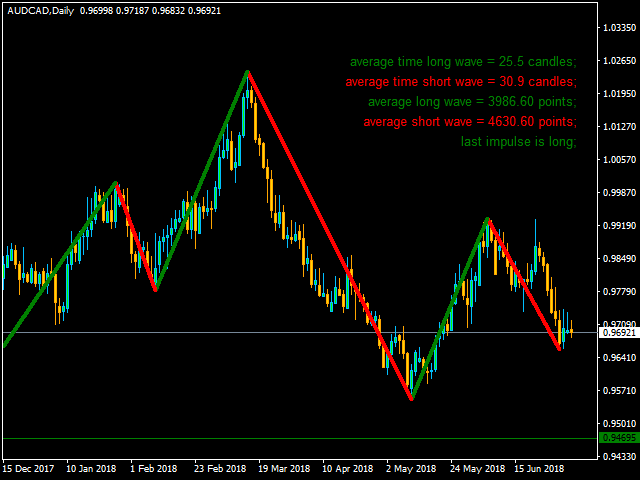Automatic reading of Elliott waves.
Automatic reading of Elliott waves.
Swing Reader easily reads Elliott waves using an automatic system. When leaving the standard deviation, a zigzag is plotted. You can set the deviation manually or allow the indicator to do this automatically (by setting the deviation parameter to zero).
- Never redraws.
- The dots show the horizontal line that statistically ends the rising wave.
- Candlesticks show the vertical line that statistically ends the rising wave.
- The horizontal line is constructed using the average points that statistically make up the descending waves.
- The horizontal line is constructed using the average points that statistically make up the ascending waves.
- The ability to optimize the indicator for each timeframe.
In the upper right corner you will find very important information about the market movement:
- Long Waves Average Time: the number of candlesticks that statistically make up the rising wave.
- Short Waves Average Time: the number of candlesticks that statistically make up the descending wave.
- Long Waves Average: points that statistically make up the rising wave.
- Short Waves Average: points that statistically make up the descending wave.
- Last impulse: for an uptrend, this means that the last uptrend is larger (in points) than the last downtrend; for a downtrend, the situation is reversed.
[spoiler title=”Read More…”]
- Deviation: the standard deviation for calculating the fluctuation (at 0 is determined by the indicator).
- Average Method: The method for calculating the averages displayed in the upper-right corner. There are two options available:
- Simple: the arithmetic mean.
- Linear Weighted: the average weighted by the latest waves (the newest waves are the most important!!).
- Bulls Color: the color of the rising waves.
- Bears Color: the color of the descending waves.
- Swing Width: the width of the waves.
[/spoiler]





